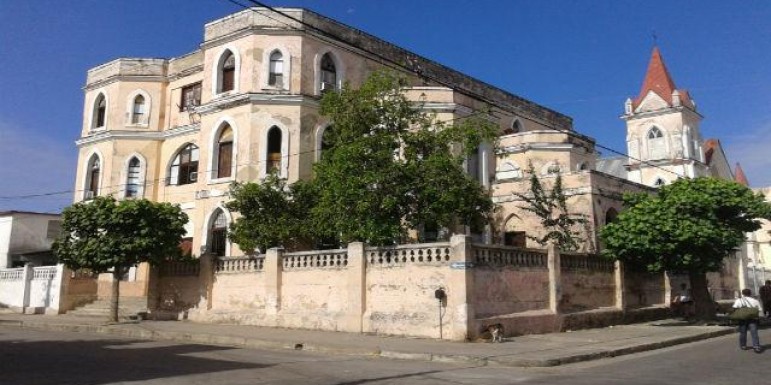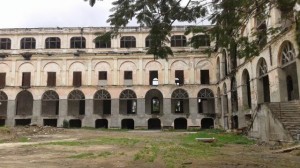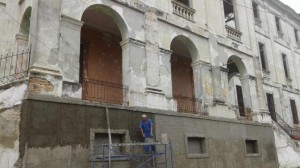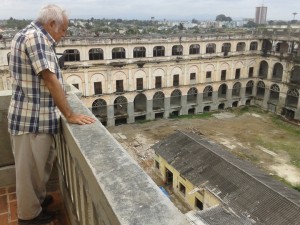
Cuba returns religious property
CIENFUEGOS, Cuba — The return of property from the churches seized by the Cuban government after the triumph of the Revolution in 1959 is more and more a fact.
“At this time, the correct word is ‘process,’ because it is an initiative begun some years ago that has not stopped,” says from Havana Msgr. José Félix Pérez, associate secretary of the Conference of Catholic Bishops of Cuba.
“With this step we can rehabilitate places for services and pastoral action in cities where the religious communities had to meet in private homes or uncomfortable spaces,” the prelate says. “Thus, we have gotten back chapels and temples in Santiago de Cuba, Bayamo, Camagüey and Havana, in addition to Cienfuegos.”
“In the past 50 years, the Catholic Church has not had the wherewithal to build new temples and places of worship, so we greet this decision with much gratitude, because it is a way to recognize that the Church needs these sites (buildings and spaces) and that, with those acts, a better relationship between Church and State is enabled,” Pérez says.

Father Ignacio Cruz Magariño was born just across the street from the old College of the Jesuit Fathers, an iconic building in the city of Cienfuegos, 240 kilometers southeast of Havana.
According to him, although the school did not function as such since the 1940s, in 1961 it was “nationalized” by virtue of a law that made all learning centers in Cuba public schools and turned over the buildings to the Ministry of Education.
As a member of the Society of Jesus and the priest assigned to the temple, Ignacio participated in several requests and conversations held since the 1960s. The talks led to the reacquisition of parts of the building until the Church regained it fully in November 2013.
“There is no document that certifies the turnover, but it has been effective because, a few weeks later, the offices and warehouses of state-run entities that occupied the ground floor were moved to other sites,” Cruz Magariño says.
Something similar occurred with the home of the parish priest in nearby Palmira, for many years utilized as a public library, and with the chapels in some sugar mills, according to the bishop of the Diocese of Cienfuegos/Trinidad, Domingo Oropesa Lorente.
“I think that they are very positive acts on the part of the authorities, and we understand that in time everything that was part of the Church’s patrimony will be returned. In Cienfuegos, there is also interest in returning part of the old college of the Dominicans,” says the monsignor, who sees in the return of the real estate a favorable step, especially for society.

“The cathedral is of no use for me alone. It is a space for the people, who can live their faith there. So it will be with the college of the Jesuits. It won’t be just for the four or five priests who live inside,” he says.
Sources close to the authorities were reluctant to speak on the subject, because they say it’s a process still not made official by a legal ruling that replaces the abovementioned “law of nationalization.”
Off the record, the sources said that the decision will benefit not only the Catholic Church but also other religious institutions that owned property and buildings at the time of the Revolution.
That possibility could not be confirmed by the Council of Churches of Cuba, an organization that includes most of the Protestant congregations in the country.
Nevertheless, the scant information available about this process elicits moderate expectations in some members of congregations affiliated with the Council, such as the Anglican Church.
Halbert Pons, Episcopal Church priest in Santiago de Cuba, believes that it will be difficult for many of the buildings to be returned because they’re being used as public schools.
But he recognizes that there is an open channel of communications to obtain grants of land formerly owned by his church that, for various reasons, have been used by the Cuban State in Sola, Camagüey province, and Boquerón, Guantánamo province.
At the Catholic Church, no one can throw much light on the return of sites or the issuance of construction permits for other religious congregations. “I think something is going on, too, but I have little information about it,” says secretary José Félix Pérez.

“With us, everything has happened through verbal assurances that later become reality in the municipalities. They give us spoken guarantees that we’ll be able to use again what once was ours,” the priest says.
With obvious enthusiasm, Father Ignacio, a master craftsman in the Society of Jesus, looks at the city block on which he hopes to rebuild. “This was a ‘realengo’ [state-owned land],” he says. “We just removed more than 45 truckloads of garbage because for years people thought this was a dump.”
“We know that many years will pass before we can inaugurate the house of spiritual practice that we want,” the priest says. “We’ll have to demolish some sections but the building is salvageable. Despite the theft of beams, floor tiles and carpentry, the walls are quite strong. Now we’re looking into the needed capital, because a million-dollar restoration is not something we can do in a few days. Besides, that kind of money will not be available at one time.”
“What’s past is past,” Father Ignacio says. “The present is encouraging to all. Not only because we have an opportunity to fulfill our dream of helping create healthy minds and spirituality, but also because the city will regain a very valuable building.”
(From El Toque)

